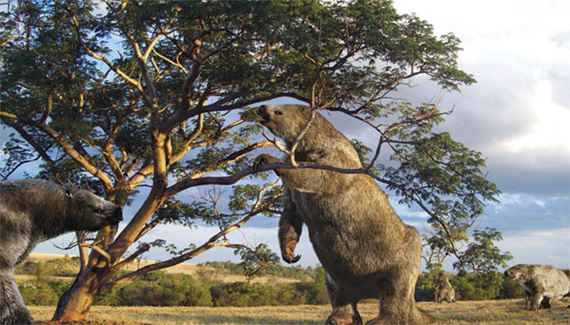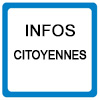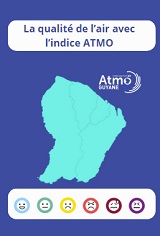Blada.com
jeudi 18 décembre
Boîtes aux lettres
Courrier des lecteurs
Petites annonces
Emploi / Formation
Covoiturage
Infos citoyennes
Infos citoyennes
21/10/21
Découverte de fossiles d'un paresseux géant près de Maripa-Soula !
 Une équipe de chercheurs menée par le paléontologue et professeur de l'Université de Montpellier, Pierre-Olivier Antoine, s'est rendue sur le site d'Atouka à quelques kilomètres au sud du bourg de Maripa-Soula, à la recherche des traces du paresseux géant, une espèce aujourd'hui disparue, l'ancêtre de nos paresseux actuels, ayant vécue à l'ère du Pléistocène.
Une équipe de chercheurs menée par le paléontologue et professeur de l'Université de Montpellier, Pierre-Olivier Antoine, s'est rendue sur le site d'Atouka à quelques kilomètres au sud du bourg de Maripa-Soula, à la recherche des traces du paresseux géant, une espèce aujourd'hui disparue, l'ancêtre de nos paresseux actuels, ayant vécue à l'ère du Pléistocène.
Une exploration réalisée dans le cadre du projet « Timespan » piloté par le LaBex CEBA (Centre d'étude de la biodiversité amazonienne).
La moisson a été bonne pour la mission de terrain Timespan. Un succès sur tous les plans avec la découverte de nombreux éléments fossiles : mandibule, maxillaire, radius et vertèbre du premier élément de la mégafaune des Guyanes. Il s'agit d'un individu juvénile du paresseux géant Eremotherium laurillardi, éteint il y a 12 000 ans. Ils ont pu effectuer des prélèvements de pollen, charbons, cuticules (plantes et insectes)...
Une mission rendue possible grâce aux agents du Parc amazonien, des gendarmes et des FAG.
Une nouvelle ère pour la paléobiodiversité guyanaise est ouverte !!!
Le Pléistocène est la première époque géologique du Quaternaire et l'avant-dernière sur l'échelle des temps géologiques. Elle s'étend de 2,58 millions d'années à 11 700 ans avant le présent. Elle est précédée par le Pliocène et suivie par l'Holocène. Le Pléistocène est marqué par les cycles glaciaires.
Professeur Pierre-Olivier Antoine :
« Originellement spécialiste des grands mammifères du Cénozoïque de l’Ancien Monde (surtout rhinocéros : taxonomie, phylogénie et distribution), je travaille également depuis 2003 sur les peuplements mammaliens du Tertiaire d’Amérique du Sud, et plus généralement sur l’évolution et la dynamique des paléo-écosystèmes néotropicaux terrestres et aquatiques au Cénozoïque. Cela m’a permis d’adopter une vision beaucoup plus large de l’évolution, à l’échelle des écosystèmes et en
relation étroite avec les forçages abiotiques régionaux et globaux.
Je coordonne une équipe internationale et multidisciplinaire (paléontologues, géologues et biologistes) en Amazonie depuis 2004, dans les Andes depuis 2011 et dans les Caraïbes depuis 2018 (ANR GAARAnti), tout en continuant à valoriser mon expertise sur les rhinocéros fossiles et actuels. Depuis mes débuts, les spécimens fossiles que j’étudie proviennent pour l’essentiel des missions de terrain auxquelles je participe. »
Il pouvait mesurer 5 mètres et peser jusqu'à 3 tonnes. Paresseux terrestre et herbivore présent sur tout le continent américain (du nord au sud).

A team of researchers led by the paleontologist and professor of the University of Montpellier, Pierre-Olivier Antoine, visited the Atouka site a few kilometers south of the town of Maripa-Soula, in search of traces of the giant sloth, a now extinct species, the ancestor of our current sloths, having lived in the Pleistocene era.
An exploration carried out as part of the “Timespan” project led by the LaBex CEBA (Center for the Study of Amazonian Biodiversity).
The harvest was good for the Timespan Field Mission. A success on all levels with the discovery of many fossil elements: mandible, maxilla, radius and vertebra of the first element of the megafauna of Guyanas. It is a juvenile individual of the giant sloth Eremotherium laurillardi, extinct 12,000 years ago. They were able to take samples of pollen, charcoals, cuticles (plants and insects) ...
A mission made possible thanks to the agents of the Amazonian Park, the gendarmes and the FAG.
A new era for Guyanese paleobiodiversity has opened !!!
The Pleistocene is the first geological epoch of the Quaternary and the penultimate on the geological time scale. It stretches from 2.58 million years ago to 11,700 years before the present. It is preceded by the Pliocene and followed by the Holocene. The Pleistocene is marked by glacial cycles.
Professor Pierre-Olivier Antoine:
“Originally a specialist in the large mammals of the Cenozoic of the Old World (especially rhinos: taxonomy, phylogeny and distribution), I have also been working since 2003 on the mammalian populations of the Tertiary of South America, and more generally on the evolution and the dynamics of neotropical terrestrial and aquatic paleo-ecosystems in the Cenozoic. This allowed me to adopt a much broader vision of evolution, at the ecosystem level and in
close relationship with regional and global abiotic forcings.
I coordinate an international and multidisciplinary team (paleontologists, geologists and biologists) in the Amazon since 2004, in the Andes since 2011 and in the Caribbean since 2018 (ANR GAARAnti), while continuing to promote my expertise on fossil and current rhinos. Since my beginnings, the fossil specimens that I study have mostly come from the field missions in which I participate. "
It could measure 5 meters and weigh up to 3 tons. Terrestrial and herbivorous sloth present throughout the American continent (from north to south).
Raccourcis


passer une petite annonce

passer une annonce de covoiturage


passer une annonce d’emploi







associations, postez vos actualités

participez au courrier des lecteurs
La Guyane c’est ici
La qualité de l’Air avec
ATMO
Photothèque

Lancements 2022
Vol 259 Ariane 5




